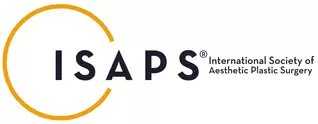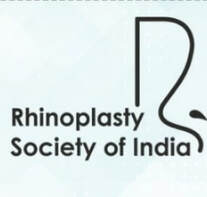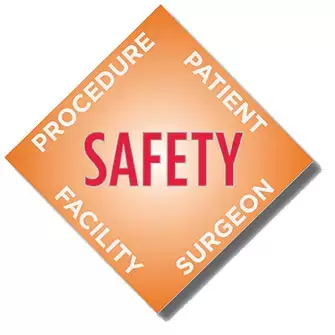|
Beauty is associated with proportions. A body part that is disproportionate to the rest of the body can impair appearance. An example would be women with arms that are large when compared to the torso. It is a common aesthetic concern in plastic surgery practice.
Arms are tubular structures. They consist of soft tissues around a bone. The soft tissues are made up of structures like fat, muscles, and vessels. It is surrounded by skin. Large arms usually involve a relative excess of fat and skin. The fat occupies the layer deeper to the skin. As the volume of fat increases, the overlying skin stretches to adjust to the increased volume. Hence, a reduction in the size of the arms involves a reduction in the size of the fat and skin excess. We can achieve this through surgical, and non-surgical techniques. Why do some individuals get big arms? The increase in the size of the arms is associated with excess weight. This excess fat gets deposited in various areas of the body. Some of us tend to deposit this fat more in our arms. This intrinsic tendency varies from one individual to another. Other conditions can be associated with an increased size of the arms, lymphedema, soft tissue swellings, etc. But they are relatively less common causes of big arms. This article deals with the management of the arms as a result of excess fatty tissue. What can be done to improve the appearance? A reduction in the size of arms has to address the two types of tissues involved, namely fatty tissue and skin. First, the fat. Fat occupies the area between the muscles and skin. The amount of fatty tissue correlates with the amount that can be rolled between two fingers. Fat is amenable to dietary modifications. A reduction in body weight usually leads to a reduction in the amount of fatty tissue and a resulting in a decrease in the size of arms. Liposuction is a surgical technique to remove the fatty tissue with the help of small tubes (cannula). It is useful for individuals with fatty tissue that is resistant to dietary modifications. A good candidate for liposuction is someone with close to ideal body weight. Liposuction does not directly address the excess skin. Next, the skin. The skin stretches to accommodate the excess fatty tissue. Once there is a reduction in the fatty tissue with diet or liposuction, there is a recoil of this skin. Recoil is the shrinking of the skin to a smaller area. However, this recoil of the skin takes time. It can take as much as a year for the skin to maximally recoil. In cases of massive weight loss, the recoil can be incomplete. This is seen as a persistent loose fold(s) of the skin. It is usually seen on the undersurface of the arms. Skin recoil is also reduced with advancing age and in smoking. Brachioplasty is a surgical procedure to remove excess skin. During brachioplasty, skin is removed as an ellipse from the medial surface (inside) of the arm. This is the part of the skin that abuts the torso. The decision to undertake a brachioplasty is taken after waiting for the skin to maximally recoil. Hence, it is usually not carried out during liposuction. The extent of skin removal is customized depending upon the extent of skin excess. Brachioplasty helps in improving the contour by removing the loose skin folds. What are the advantages of the management of this condition? It helps in improving the appearance of the arms in individuals with disproportionately large arms. The role of diet and exercise play a very important role in the appearance of the arms. Liposuction and brachioplasty are two surgical procedures that help to further optimize the appearance of arms. |
AuthorI like to keep it simple. CategoriesArchives
June 2024
Categories |
- Home
-
Cosmetic
- Fat grafting
- Swellings and moles
- Scar revision
- Leukoderma (Melanocyte transfer)
- Hair transplant
- Facial rejuvenation procedures
- Nose job (Rhinoplasty)
- Cleft lip nose correction
- Ear (Otoplasty)
- Lip reduction
- Breast augmentation
- Breast reduction
- Tuberous breasts
- Axillary breasts
- Gynecomastia
- Liposuction
- Brachioplasty (Arm contouring)
- Abdominoplasty (Tummy tuck)
- Female genital rejuvenation
-
Reconstructive
- Contact
- Blog
- Home
-
Cosmetic
- Fat grafting
- Swellings and moles
- Scar revision
- Leukoderma (Melanocyte transfer)
- Hair transplant
- Facial rejuvenation procedures
- Nose job (Rhinoplasty)
- Cleft lip nose correction
- Ear (Otoplasty)
- Lip reduction
- Breast augmentation
- Breast reduction
- Tuberous breasts
- Axillary breasts
- Gynecomastia
- Liposuction
- Brachioplasty (Arm contouring)
- Abdominoplasty (Tummy tuck)
- Female genital rejuvenation
-
Reconstructive
- Contact
- Blog
You can leave us a comment using the contact form below.
We shall get back to you at the earliest.
We shall get back to you at the earliest.
Links
- Face procedures | Rhinoplasty, Otoplasty, Lip reduction, Fat grafting
- Body procedures | Gynecomastia , Breast reduction, Abdominoplasty, Brachioplasty, Liposuction
- Skin procedures | Scar revision, Moles, Leukoderma surgery
Let's be friends !
Follow us at Facebook and Twitter.
Follow us at Facebook and Twitter.
© 2024 Amicus Clinic (Plastic Surgery Centre, Trivandrum). All rights reserved.
 RSS Feed
RSS Feed



